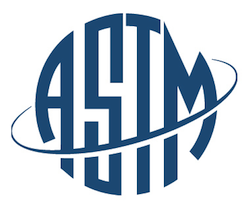 The EPA has issued a Federal Register notice indicating that the proposed changes to ASTM 1527 are open for public comment until September 13, 2013. The revised standard (E1527-13) will be effective 90 days from the close of the public comments period, provided no adverse comments are submitted.
The EPA has issued a Federal Register notice indicating that the proposed changes to ASTM 1527 are open for public comment until September 13, 2013. The revised standard (E1527-13) will be effective 90 days from the close of the public comments period, provided no adverse comments are submitted.
Interestingly, the proposed rule does not require the use of E1527-13. Instead, the rule allows either E1527-13, E1527-05, or E2247-08 standards to be selected as the regulatory guideline for following the All Appropriate Inquiries assessment.
Here’s an excerpt from the proposed rule:
Today’s proposed rule will not require any entity to use this standard. Any party who wants to claim protection from liability under one of CERCLA’s landowner liability protections may follow the regulatory requirements of the All Appropriate Inquiries Final Rule at 40 CFR part 312, use the ASTM E1527-05, use the ASTM E2247-08 “Standard Practice for Environmental Site Assessments: Phase I Environmental Site Assessment Process for Forestland or Rural Property,” or use the standard recognized in today’s proposed rule, the ASTM E1527-13 standard.
Summary of changes from E1527-05 to E1527-13:
- New definition of “Recognized Environmental Condition” (REC) – the presence or likely presence of any hazardous substances or petroleum products in, on, or at a property due to release to the environment; under conditions indicative of a release to the environment or under conditions that pose a material threat of future release. De minimis conditions are not recognized environmental conditions.
- New limit of HREC “Historical Recognized Environmental Condition (HREC)” to include only past releases that have been addressed to unrestricted residential use
- New term “Controlled Recognized Environmental Condition” (CREC) is defined to include past releases that have been addressed but allow contamination to remain in place.
- Clarification on the definition of “de minimis condition.” The revision makes it clear that environmental professionals should not use this term to describe a CREC.
- Revised definition of “migrate/migration” to specifically include vapor migrations. Releases that migrate onto a subject property via a vapor pathway will be identified as recognized environmental conditions.
- Revised definition of “release” to have the same meaning as the definition of release in CERCLA.
- Revised definition of “environment” to have the same meaning as the definition of environment in CERCLA.
- Revised scope of “User Responsibilities” section (Section 6) to clarify which aspects of the site assessment investigation may be the responsibility of the user, or prospective property owner, or the user’s chosen representative, and not necessarily the responsibility of the environmental professional. This revision aligns with the language at 40 CFR 312.22 (Additional inquiries).
- Added additional guidance at section 8.2.2, Regulatory Agency File and Records Review, of the standard to provide a standardized framework for verifying agency information related to information obtained from key databases.
- Revised language in section 12.8 (Conclusions) to allow some flexibility with regard to the wording of the conclusion statement provided by an environmental professional as part of the assessment reports conclusion statement.
- ASTM has updated the information provided in the standard’s non-binding appendices. Appendices are non-binding and are provided for only for background information.
What do you think?
Should the latest revisions to the standard be required of everyone conducting environmental site assessments (ESAs)? Should the EPA allow a choice of which standard to follow when conducting ESAs? If file reviews are required under E1527-13 and not under E1527-05, will some companies choose to follow the standard that minimizes their costs? Will allowing a choice have negative impacts on the pricing of ESAs? What will be the difference in terms of quality of ESAs for firms who adopt the new standard as compared to other firms that continue to use the old standard?
 Carissa Ries
Carissa Ries
carissar@banksinfo.com
